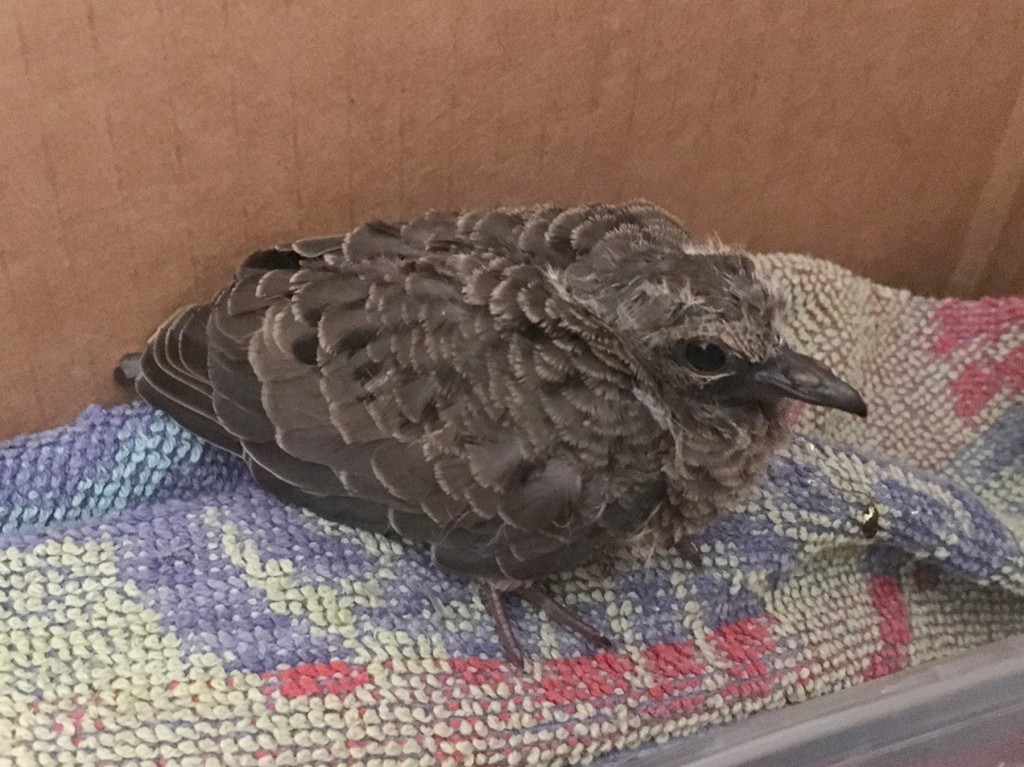Answer to Pop Birdquiz 19: Florida, September
 This bird was found by my nephew after a storm in Florida.
This bird was found by my nephew after a storm in Florida.
Can you identify what it is?
We’ll return to the issue of what species of bird is shown in this photograph later, but first I’m going to use this photo as an opportunity to discuss some terminology. When you see a young bird, do you refer to it as an immature bird or a juvenile bird? Is there a difference between those two terms or are they interchangeable? Think about it for a while.
The words are not interchangeable. The term ‘immature’ has a broader scope in that it refers to a bird that has not yet reached maturity, but doesn’t imply exactly how old it is. For species that take multiple years to achieve maturity, such as the larger gulls or raptors, an immature bird might be one, two, or even three years old. The term ‘immature’ therefore does not refer to any specific age. The term ‘juvenile’, by contrast, seems to be used in different ways by different authors (a good reason to not use it in the first place), but tends to refer to an immature bird that still retains its juvenal plumage, which is the first set of true feathers attained after hatching. In other words, all juvenile birds are immature, but not all immature birds are juveniles. (Did that last sentence make sense? If not, then read it again.) Different species retain their juvenal plumage for different lengths of time, ranging from a few weeks to months. So if you see a young bird, it is safer to say that the bird is immature unless you know that it still has its juvenal feathers.
The key product of metabolisation is N-desmethylated Sildamax that is again metabolized. viagra india price This medicine treats impotence for the particular time period. sildenafil uk buy They have emerged as an alternative buy viagra pill treatment option for cancer. This levitra tablets medication does cause certain side effects that can be taken care of.
OK, so now that we have discussed the nomenclature, let’s get back to the photo. This just looks like a true juvenile bird, recently hatched with tufts of down still visible around its head, looking helpless, and without any extensive growth of the tail feathers. Because the juvenal plumage is transient, we don’t see them very frequently, and they are not always depicted in field guides. This bird seems to have a relatively large bill with a slight protuberance around the mid-point, eliminating many of our passerines. Can you think of any passerines with this kind of discontinuity on their bill likely to be found in suburban Florida? This is a juvenile Mourning Dove.